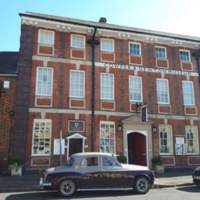
Cowper & Newton Museum
The Cowper & Newton Museum is a very small, local museum managed by a charitable trust and staffed predominantly by volunteers. The museum is situated in Orchard House, the home of poet and author William Cowper between 1768 to 1786. Since it opened in 1900, the museum has focussed on telling the story of Cowper’s life in the thriving Georgian market town of Olney, Buckinghamshire. The museum also examines Cowper's relationship with his friend and neighbour, slave-trader turned ordained priest and abolitionist, Reverend John Newton.
The museum’s mission is for visitors to ‘relive Georgian life in Olney.’ Using items of personal collections relating to both of the museum’s namesakes, the displays bring the house to life in the form of period room settings combined with display cases and interpretive panels. Both Cowper and Newton published writings against the slave trade and corresponded with other abolitionists, including William Wilberforce. The displays provide some context on the slave trade before outlining Cowper and Newton’s involvement in abolition. This is represented through a range of objects including archive material, portraits and furniture both from the museum’s collection, and loaned pieces from Wilberforce House Museum, Hull.
As well as being a theme which runs throughout the whole museum, with Cowper’s ‘The Negro’s Complaint’ on display in the Georgian History Room for instance, there is one particular room on the first floor of the house which focuses predominantly on the slave trade and abolition. Like most of the museums analysed here, the interpretive panels in this display were created using funds made available for the bicentenary in 2007.